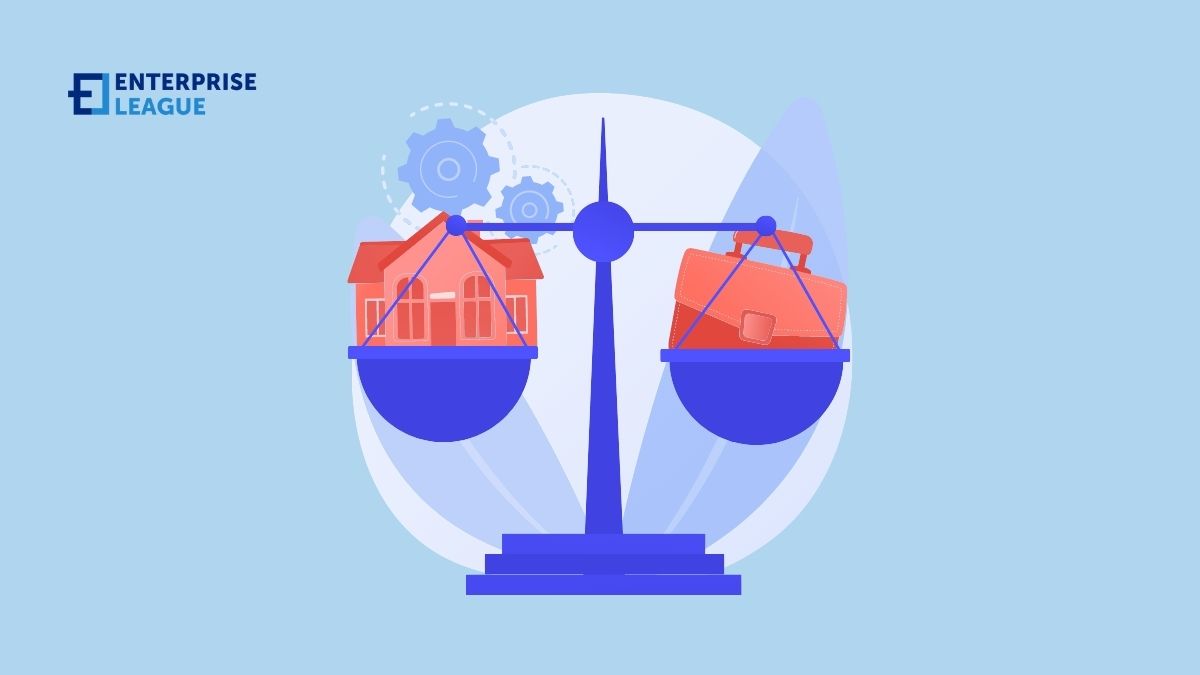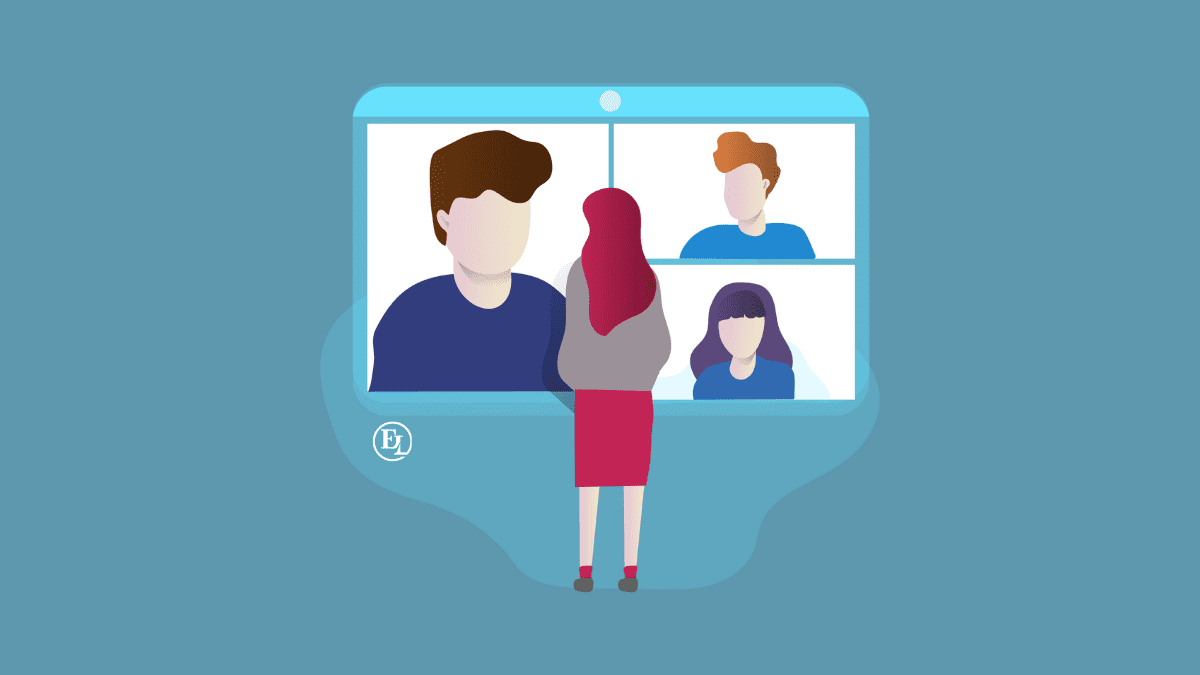36 psychological tactics in marketing: How marketing psychology works?
December 01, 2022

That companies are using psychological tactics in marketing to win over the audience and boost sales is nothing new. In fact, the use of marketing psychology became even more important in recent years. The globalisation and digitalisation have stiffened competition and the market is more saturated than ever. Hence, companies need to find an effective way to promote their products or services. In other words, having a few psychological marketing tricks up your sleeve makes the difference between thriving and surviving.
Although the term psychological tactics in marketing might sound scammy to some, it’s far from the truth. Marketers only found a way to turn the human brain configuration to their advantage. Leveraging the findings of psychological studies and researches is in no way unethical or immoral.
Curious about the power of marketing psychology ourselves, we embarked on a mission to discover the most effective psychological tactics in marketing. Thanks to more than thirty marketers who offered their insights, we were able to write this comprehensive article.
Quickly jump to any tip:
1. Loss aversion marketing
2. Highlighted CTA as a marketing tool
3. The power of FOMO
4. Relative vs absolute terms
5. On the same side of the table
6. The Baader-Meinhof phenomenon
7. Tangible offers with visuals
8. Rhymes are memorable
9. Everybody loves getting things for free
10. Names open doors
11. The Rule of 3 rules
12. Price anchoring is king
13. Creating a sense of urgency
14. Negative superlatives are more effective
15. Picture yourself
16. Playing with emotions
17. Color marketing is for real
18. What’s that smell?
19. Clustering related functionalities or incentives
20. Storytelling never gets old
21. Illogical reasoning works like magic
22. Discounted prices always work
23. ELMR framework – what is it?
24. Playful quizzes to spark up engagement
25. The foot-in-the-door tactic is the perfect bait
26. Offering unique value proposition
27. Maintaining high standards to stand out
28. The halo effect is a double-edged sword
29. One-two punch to grab attention
30. Social competition as a trigger
31. Offline engagement to avoid the online noise
32. Keeping up with the Joneses
33. The theory of three hawkers
34. Eye movement and marketing
35. Playing with open cards
36. Giving less choice brings more cash
Loss aversion marketing
This is called Loss Aversion and therefore once companies such as Netflix offer you their premium service, for free, you become hooked! And as the days draw near towards the end of the trial, you become anxious to leave the platform. And finally, the deadline drives you to finally take out your credit card and become an active member.
Of course, loss aversion is more effective when the product that consumers are using, on a trial basis, actually provides them value. But this much is certain, that a big part of Netflix’s growth can be attributed to the Loss Aversion strategy.
Chris Brenchley, Co-Founder and CEO of Surehand
Incorporate emotive language into the content, to imply that the potential customer already owns the service. Emphasize the losses that the potential customer would incur if they do not take your offer. Offer your potential customers a free trial of your service.
Muhammad Ali Sangi, Digital Marketing Strategist at PureVPN
As the CEO of The Bottom Line Group, I lead a select group of consultants in reviewing current contracts and service statements to help clients save money. In our sales pitches, we always emphasize how a potential client will never learn how to achieve tax liability reductions and increase near-term cash flows when they don’t hire us. It’s because of the principle of loss aversion that makes them realize that our services are indeed needed, especially in this period when a global recession is putting companies’ finances down to the drain.
Michael Hammelburger, CEO at Expense Reduction Group
This may seem counterintuitive because we are always taught to paint a positive picture to our customers. However, psychologists have found that people will generally go to great lengths to avoid pain rather than pursuing pleasure. By highlighting some of the possible negative effects of not getting our product, you actually evoke a greater emotional response in your customers and this will increase your chance of a conversion.
Albert Lee, Founder of Home Living Lab
Highlighted Call-to-Action as a psychological marketing tool
The most effective yet simplest psychological marketing tip is working with CTAs.
A highlighted and bright CTA (Call-to-Action) button always work, so make sure to integrate highlighted CTAs on your website. Also, de-highlight other buttons like Add-to-Wishlist so that the main CTA stands out. Highlighting them, specifically with orange colour, increased my
click-through rate by almost double. People tend to be attracted to orange colour of CTAs more than any other.
Rameez Ghayas Usmani, Digital Marketing Executive at PureVPN
The power of FOMO
The first step is to find your ‘lowest hanging fruit’; a subsect of your audience who will embrace being early adopters. Then by using highly targeted media and well-placed content; use ‘invite
only’ and ‘member-get-member’ tactics to draw them in. People love a sense of belonging and ownership; so inviting them to the party and asking for their input is a sure way to get a strong groundswell early on.
Laura Bell, Founder & Marketing Specialist at The Point Consultancy
Relative vs absolute terms
For marketing, this all comes down to framing. People are more likely to view a deal as favorable if it is expressed in relative terms (25% off, 50% off and so on) rather than absolute terms ($25 off). So as part of your sales and marketing, it is best to express savings and other gains for the consumer as a percentage rather than the amount.
Furthermore, this also means that people will respond better to 50% off a smaller figure for example, rather than 30% off a larger figure, even if the dollar value is the same.
William Taylor, Senior Career Advisor at VelvetJobs
On the same side of the table
One of the psychological tactics in marketing I use is actually an in-person tactic: when meeting with a prospect, I’ll often sit on the same side of the table or perpendicular from them rather than across. This plays to the psychology “we’re on the same side” and allows people to put their guard down a little easier. From there, I gather more information on their real versus perceived needs.
Tanya Moush, Founder of Moushi & Co. moushi.co
The Baader-Meinhof phenomenon
We’ve bolstered our marketing efforts by employing the Baader-Meinhof phenomenon. In a nutshell, it explains why cognitive bias occurs when a product that a target market has just noticed online or heard through word-of-mouth marketing suddenly crops up constantly.
A more consistent presence in different channels makes our brand more trusted. For instance, we’ve invested in multi-channel marketing to get the word out about our website and the bodyboard products that we carry. We then take advantage of social proof through customer reviews and features on our newsletters. Our customers’ testimonials are essential in our brand’s great storytelling approach to leverage confirmation bias.
Finn Cardiff, Founder of Beachgoer
Tangible offers with visuals
Try to make your landing pages more tangible for the target audience. Make sure they can relate to what you are offering. This requires you to customize the product video, content, color scheme, and overall presentation based entirely on your customer’s needs. When you are offering digital products, you need to execute tangibility as much as you can. Therefore, your customers can visualize what it feels like to actually use the product. This is an amazing technique to align your marketing goals.
Sameed Ajax, Content Strategist at PureVPN
Rhymes are memorable
Agnieszka Cejrowska, Content Manager at Profesjonalne Pozycjonowanie
Everybody loves getting things for free
Using the word Free in Ad copy, offline or website has proven quite effective in marketing. Free could be a trial, service, add-on, consultancy, quotation, or items. It’s a human mindset and tendency to get attracted to the word ‘free’
In my experience, I have used the word free quotation in many ad copies and landing pages and it performed better than the copies where the ‘free’ word was not written.
Harshil Bhatnagar, Founder of Staiir Social Media Marketing
It isn’t uncommon for emotions to trump logic when it comes to consumer choices. We advised one of our business customers to leverage irrational consumer behaviour by offering free shipping on select products for an online retailer. The kicker is, they didn’t want to mess with profit margins, so they actually increased the cost of qualifying items to offset the promo. The total purchase expense was the same, yet they were able to increase sales for targeted products by 22% during the month the promo ran. The items not listed for free shipping showed no changes in consumer trends.
Kimberly Smith, Marketing Manager at Clarify Capital
Names open doors
For example, my goal is to do interviews with well-known industry representatives. To get my proposal accepted by new people, I’m mentioning in the very first letter the name of another person who has already agreed to participate in the interview. As my practice shows, this approach is fruitful – my new interlocutor is more likely to be agreed to participate too.
Tatiana Gavrilina, Content Marketing Writer at DDI Development
The Rule of 3 rules
– Breaking down any process into three steps
– Presenting three value propositions on a web page
– Creating a three-point agenda for a webinar/presentation
Do you want to keep people’s attention and be remembered? The Rule of 3 is your best ally.
Karolina Gawron, Head of Marketing at Surfer
Price anchoring is king
I am CEO at a product development company for SaaS startups. We help founders with pricing strategies. And psychological tactics in marketing are in wide use in pricing plans. One of the best is price anchoring.
The price of something is a relative concept of something. And just relativity is a manipulative factor to use price anchoring.
To use this approach, place the most expensive package in a prominent place. There is no guarantee that people will buy it. But the main thing is to give the impression that other options are more accessible.
Then, at the cross-selling or upselling stage, you can repeat this trick in order to move from a more expensive to a more “reasonable” price package.
For example, Mailchimp use such an approach.
Maksym Babych, CEO at SpdLoad
Creating a sense of urgency
This statutory warning has created an extreme sense of urgency for our audience and customers. Eventually, they are rushing to get our online discount coupons to buy their requirements before stocks last.
Andrei Vasilescu, CEO and Digital Marketing Specialist at DontPayFull
When consumers see that there is either a countdown timer within an email, or a number of units left/sold on a particular product page, it really helps to create a sense of urgency, psychologically, for the particular product/service that you’re promoting. These types of tactics are not only great psychological tactics in marketing but also a great way to quantify and qualify the demand for that specific product/service for your own knowledge as well.
Carley A. Hanna, Digital Marketing & SEO Lead at Supplement Warehouse
Negative superlatives are more effective
So I started researching why some blogs are a click magnet. I realized by implementing a few psychological tricks in the headline of my blog. I can attract more clicks. My favorite is using superlatives words like best, biggest, and greatest. It can be effective in headlines. But it turns out that negative superlatives (like worst) can be even more powerful. We noticed negative superlatives attract more clicks.
Abdulaziz Ali, Content Strategist and Content Writer at Digital Growth Boost
Picture yourself
Ronald D’souza, Digital Marketing Manager at FJackets
Playing with emotions
One effective way is to run emotional ideas. Studies have shown emotional and psychological appeals resonate more with consumers than feature and function appeals. You can also get the emotion of the people by your advertising copy. Demonstrate for them to see how it works or incorporate trendy ideas on copy for posting online. Use memes, trendy statements, and relevant persons to get the attention of the potential buyers.
Tal Shelef, Realtor and Co-Founder of Condo Wizard

© John Lewis | Man on the Moon, 2015
Color marketing is for real
Nate Nead, CEO at SEO.co
What’s that smell?
Phillip Adcock, Managing Director at Adcock Solutions
Clustering related functionalities or incentives
You have learned of this psychological marketing tactic if you have ever researched or attempted to improve productivity in the field. Clustering is the process of arranging identical pieces of knowledge so that you can best recall it.
Once the hippocampus enters your long-term memory to recall something, it searches for the related cases. It’s meant to be that it’s a more convenient place to store anything. You wouldn’t place the wrenches together on different shelves so that you can locate the same model when you’re looking at them all.
One research experimented with textual clustering. The investigators provided a random collection of fifteen words to participants and challenged them to recall them. We then offered them a separate set of 15 words but divided them into related topics. In the second study, the results revealed a significant improvement in awareness.
The most successful approach to do this is to bring together related functionality or incentives on your landing pages and things relevant details in the same parts of your posts. Bulleted lists may be a simple route.
Lesley Reynolds, Co-Founder of Harley Street Skin Clinic
Storytelling never gets old
Knowing that everybody enjoys a good story, we like to mix our marketing materials up with interesting and entertaining anecdotes. Storytelling elements are weaved seamlessly into our blogs and web pages, encouraging prospective customers to imagine the benefits of using our services. It’s known that the great majority of customers have a preference for story-based
advertisements; with the blend of eye-catching visuals and creative wording having the greatest psychological impact. The sense of emotional connection means that branded stories live long in the memory.
Ryan Pitylak, CMO & Founder of ZenBusiness
Illogical reasoning works like magic
One simple psychological marketing trick is the use of illogical reasoning. This focuses not on what people say but on how they say it. People have been proven to follow suggestions so long as there is a reason for them, even if it doesn’t make sense. We have blind spots when someone uses “because” since it allows us to justify things even when they don’t make complete sense. That’s why it’s important to know which words are powerful when it comes to driving behaviour. One word in your marketing efforts can change how people react to your messages.
Nathan Robinson, Founder of Neighborhood Square
Discounted prices always work
Brent Bouldin, Co-Founder of New Media Advisors
How you show the price makes a big difference in marketing. If you offer a sale, put the old price in a big, bold font, then cross it out. Put the new price in a smaller font. This makes the new price seem even smaller.
Similarly, studies show that if you don’t put a comma in the price, prices seem smaller – so $2000 looks less than $2,000. This comes in handy for multi-currency or multilingual websites, as other cultures often use a full stop instead of a comma to separate thousands. No need for either, just remove it completely!
Martin Woods, SEO Director at Indigoextra
ELMR framework – what is it?
– Emotion: Messaging and imagery that connect with an audience
– Logic: Educating a prospect on the details of a product or service helps to make a customer more confident in their decision.
– Motivation: Reducing friction will make it easier to create a sense of need and motivate people to action.
– Reward: Creating a sense of approval and validation of one’s decision.
Using this sequence helps marketers understand and optimize each step of the buyer journey, ultimately leading to more effective marketing campaigns.
Rod Austin, Head of Marketing at 4Degrees.ai
Playful quizzes to spark up engagement
People love to take quizzes. Yet few companies and marketing teams are unable to devise a reliable and valid one. Why? They tend to talk at the (potential) customer rather than share a conversation.
As a psychologist, I develop a quiz for the individual to fail and realize they need the company’s product or service. A healthcare quiz in the practice’s brochure or on its website homepage keeps the reader engaged.
For example, an easy to understand analogy is the Dental Health Quiz:
- Do your teeth bleed when you brush?
- Are you embarrassed to smile?
- Are your teeth sensitive to hot and cold?
….etc.
Scoring: If you answered “Yes” to more than half of these questions, then you need to make an appointment with Dr. Jones.
Dr. Elliott B. Jaffa
The foot-in-the-door tactic is the perfect bait
Tonya Davis, Marketing Manager at ThoughtLab
Offering unique value proposition
So when we work with commoditized service providers (e.g. real estate agents, mortgage loan officers, insurance agents, etc.), we create a Unique Value Proposition for each client that is truly different from each of their competitors. This increases the likelihood of them being hired by their prospective clients.
Dr. Frank Bevacqua, Owner of Time To Thrive
Maintaining high standards to stand out
Telling prospects why they can’t buy from you is an incredible psychological tactic in marketing. Because they’re used to desperate marketing, when you set the standard high for who qualifies for your offer and who doesn’t, your sales often soar.
For example, on your landing page, if you’re a consultant, mention that you don’t work with startups, businesses doing less than $10 million, and companies without solid product-market-fit. This begs the question and answer “Why are they so strict on their standards?” It must be because they’re really good and can be strict.
Brian Robben, CEO & Founder of Robben Media
The halo effect is a double-edged sword
There is a psychological phenomenon called the Halo Effect that describes a person’s cognitive bias to prefer a certain company simply because they enjoyed a product or service of theirs in the past. This bias can be used to a company’s advantage in marketing by following up after sales to make sure customers were satisfied and extending additional offers. Happy customers will be highly likely to buy again.
While this kind of brand affinity is great, it does come with the higher risk of negative consequences if a customer has a bad experience because their reaction will be more extreme than towards a company they haven’t built a relationship with.
Jesse Silkoff, Founder of MyRoofingPal
One-two punch to grab attention
- Get their attention with VISUALS
- Tell them what you want them to do (CTA)
Then you can elaborate but keep in mind that the further down in your message, the more people you are losing.
Sara Miranda, Founder & CMO at The Good Camp
Social competition as a trigger
Dave Bowden, Founder of Irreverent Gent
Offline engagement to avoid the online noise
A neuroscience study found physical advertisements appear more real to the brain than digital content, resulting in deeper emotional processing and higher brand recall.
This is why leveraging direct mail or gifts within workflows can be a game-changing tactic. Engaging in the offline with tactile advertisements creates this pattern interrupt and has been able to book us more meetings.
Prospects, leads, and customers are tired of seeing the same templated, automated email…they receive hundreds of others (on a daily basis) that look exactly the same.
Offline engagement creates authentic connections that our brains naturally perceived as more meaningful.
Richie Pusateri, Marketing Associate at Postal
Keeping up with the Joneses
Of all the motivations that drive human beings, none is as common as wanting what someone else has. There is actually something called the Jones Effect, coined from a 1913 comic strip – “keeping up with the Joneses.” In the strip, the McGinnis family strove to keep up with what their next-door neighbors the Joneses had. In marketing, this impulse can be used to sell almost anything. If the target audiences’ ostensible neighbors the Joneses have a new car, we need a newer, better one. If they just put in a new backyard deck, we need a bigger, better one.
Michael Nemeroff, Founder and Former CEO of RushOrderTees
The theory of three hawkers
Our best tried, and successful tip for marketing based on psychology will be, ‘Theory of 3 Hawkers!’ It is based on local folklore that there are three types of hawkers:
- Who exaggerates on their product to lure customers
- Who markets how their products are to maintain clarity
- Who understates their product to appear humble and noble
Providing an innovative digital and automated management consultancy service to small and medium enterprises, we follow the (2) one. In B2B, clients are wise enough to assume the real value of services they are demanding, so we find it effective to market with clarity, honesty, and transparency.
Jash Wadhwa, Content Writer at Value Growth Audit
What eye movement and marketing have in common?
Dakota Kalbacher, Owner of Kota Marketing
Playing with open cards
Chris Waltenbaugh, Payment Processing Expert at Payment Depot
Giving less choice brings more cash
Paige Arnof-Fenn, Founder & CEO Mavens & Moguls
Conclusion
There’s a whole science behind marketing psychology; it’s not about playing cheap mind tricks. The consumer’s brain has evolved to recognise when marketers try to trick them, so be careful. Don’t exaggerate with the use of psychological tactics in marketing or they can easily backfire. Play it smart!
More must-read stories from Enterprise League:
- Getting more customers – every business owner’s biggest concern.
- These are the must-have apps you’re going to need if you’re an entrepreneur.
- Read about the reasons to hire millennials and how to attract them.
- Get entertained and educated with some of the best business movies.
- How successful businesses can give back to the community.
Related Articles
The key to small business success
From managing cash flow to building customer relationships, discover what really drives small business success and get practical tips that make a difference.
5 tips for creating boundaries between work and personal life
Creating boundaries between work and personal life is crucial to remain successful. Hence, read these 5 easy ways to balance your life and change your habits.
4 tips to follow when negotiating business deals virtually
From body language to tech setup, learn 4 crucial tips for successful virtual business negotiations and close your business deals confidently from anywhere.
The key to small business success
From managing cash flow to building customer relationships, discover what really drives small business success and get practical tips that make a difference.
5 tips for creating boundaries between work and personal life
Creating boundaries between work and personal life is crucial to remain successful. Hence, read these 5 easy ways to balance your life and change your habits.





